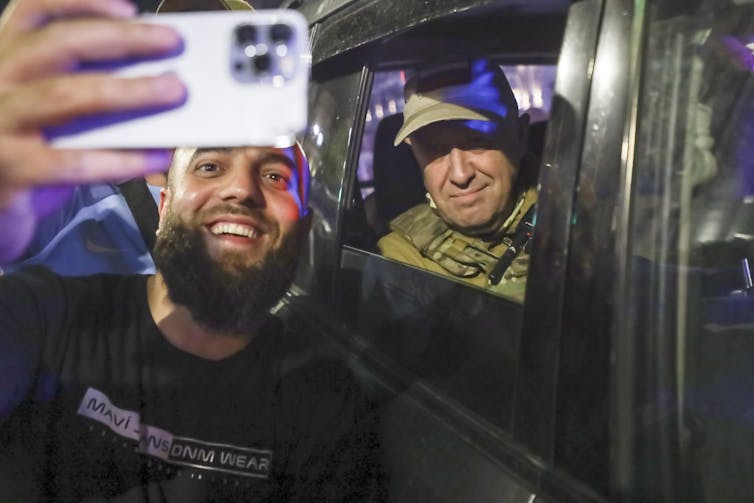
After months of speculation about when it would begin and what its aims would be, Ukraine’s much anticipated counteroffensive started in early June.
It took Ukrainian President Volodymyr Zelenskyy some days to acknowledge on June 10 that the counteroffensive had actually begun, although it was clear from Russian media that its initial phase had started days before.
One reason the counteroffensive was announced with little fanfare was that it probably wasn’t going according to plan. Initial Ukrainian losses were heavy and for little apparent gain. Ukrainian forces may initially have been probing for significant weaknesses in the Russian lines, but they didn’t find them.
Russian sources soon acknowledged that fighting was heavy — as it continues to be. The counteroffensive may still have plenty of steam, but attempts to present it as having barely got started are certainly misleading.
Significant losses
Ukraine amassed a considerable amount of western-supplied equipment and large numbers of troops for this counteroffensive. A meaningful proportion of these have certainly already been committed. Losses have been significant.
The Russian Ministry of Defence was quick to provide pictures of knocked out western armoured fighting vehicles to highlight that western equipment is far from infallible. Such losses were soon confirmed by western sources and are far from exceptional.
After weeks of fighting, it is apparent that earlier optimistic expectations about the success of this counteroffensive are unlikely to be met. At the same time, Ukrainian and western euphoria over what was widely seen as a mutiny or coup attempt by the Wagner Group in Russia was short-lived. Yevgeny Prigozhin’s abortive actions haven’t provided Ukraine with the battlefield benefits it hoped for.

As many observers predicted, much of Ukraine’s effort is being expended on trying to punch through Russian lines to reach the Sea of Azov in the southeast. Doing so would cut Russia’s land route to the Crimea. One problem for Ukrainian forces is what seemed like a good idea to them was also anticipated by the Russian side.
Fighting continues in Bakhmut region
Some Ukrainian effort is also being expended in the Bakhmut region. In this area, Ukrainian forces seem to be trying to roll back hard-won Russian gains of recent months and with localized success.
While Ukraine was able to launch two successful counterattacks in the Kharkiv and Kherson regions in 2022 that saw the recapture of significant territory, those counterattacks were launched in very different conditions than today. In both those cases, Russian troops chose to withdraw in the face of Ukrainian counterattacks — where now they are dug in and standing their ground.
The Russian army is much larger than it was in the fall of 2022 — more than 300,000 Russian troops have been mobilized since last September.
While Russian forces were caught off guard and without the resources to deal with counterattacks in 2022, this time they are ready. Russian forces have had months to prepare sometimes elaborate defensive positions in depth.
Being on the defensive also has the benefit for Russian forces of mitigating some of the supply issues they faced during 2022. Russian forces have also been making good use of equipment that in the West is seen as antiquated, but that still has considerable value in the right setting.
Russian army has adapted
The Russian army has certainly learned and adapted to the nature of the war and the Ukrainian armed forces since 2022. One example: Russian forces have been taking measures to reduce the heat signatures of armoured vehicles and their vulnerability to Ukrainian anti-tank weapons.
Finally, the Russian population — and the army it supports — has in the main hunkered down in expectation of a protracted war. Many Russians seem to feel that Russia has little choice but to fight on, where the West and Ukraine are calling for what in effect is a total Russian defeat, not meaningful negotiations. I personally know many such Russians.

There is strong evidence to suggest the Wagner Group’s recent mutiny or coup attempt was more about struggles for power within the Russian military leadership and the way the war should be prosecuted, not whether it should be continued. Nonetheless, the short-lived mutiny by Prigozhin was clearly a major embarrassment for Vladimir Putin’s government.
The Ukrainian armed forces certainly have motivated troops and considerable amounts of western equipment. But Ukrainian forces don’t have the sort of air supremacy to facilitate the type of ground advance that was crucial during the Gulf Wars of 1991 and 2003, where western weapons were used to devastating effect.
A few dozen western F-16 aircraft probably wouldn’t change the situation in the air for Ukraine — Russian air defences are still some of the best in the world.
Heavy losses on both sides
Ukrainian forces also don’t have unlimited human resources. Much has been written in the western media about estimated Russian losses and manpower issues, but very little about those of Ukraine.
Russia has lost large numbers of troops and a significant number of men eligible for military service have fled abroad. Ukraine has also suffered heavy losses that are difficult to replace, and millions of Ukrainians have left the country. Not all Ukrainian men want to fight.
Ukraine’s much smaller population means that it certainly doesn’t have the same human resources that Russia has.
Ukraine simply cannot afford to launch successive counteroffensives, no matter what equipment the West provides. The additional western resources being committed to Ukraine as the counteroffensive is underway may strengthen the Ukrainian position, but are unlikely to prove decisive.
Whether they like it or not, as I suggested last fall, sooner or later both sides will have to acknowledge that the chances of either “winning” this war are low.
How does it end?
At some point there will have to be negotiations — even if only for a ceasefire along the lines of the Korean War.
Further escalation, perhaps involving NATO troops, might genuinely risk seeing the use of nuclear weapons. Thankfully, debates in Russian policy circles on the potential for using nuclear weapons remain very hypothetical, at least for now.
Alexander Hill ne travaille pas, ne conseille pas, ne possède pas de parts, ne reçoit pas de fonds d'une organisation qui pourrait tirer profit de cet article, et n'a déclaré aucune autre affiliation que son organisme de recherche.
This article was originally published on The Conversation. Read the original article.







